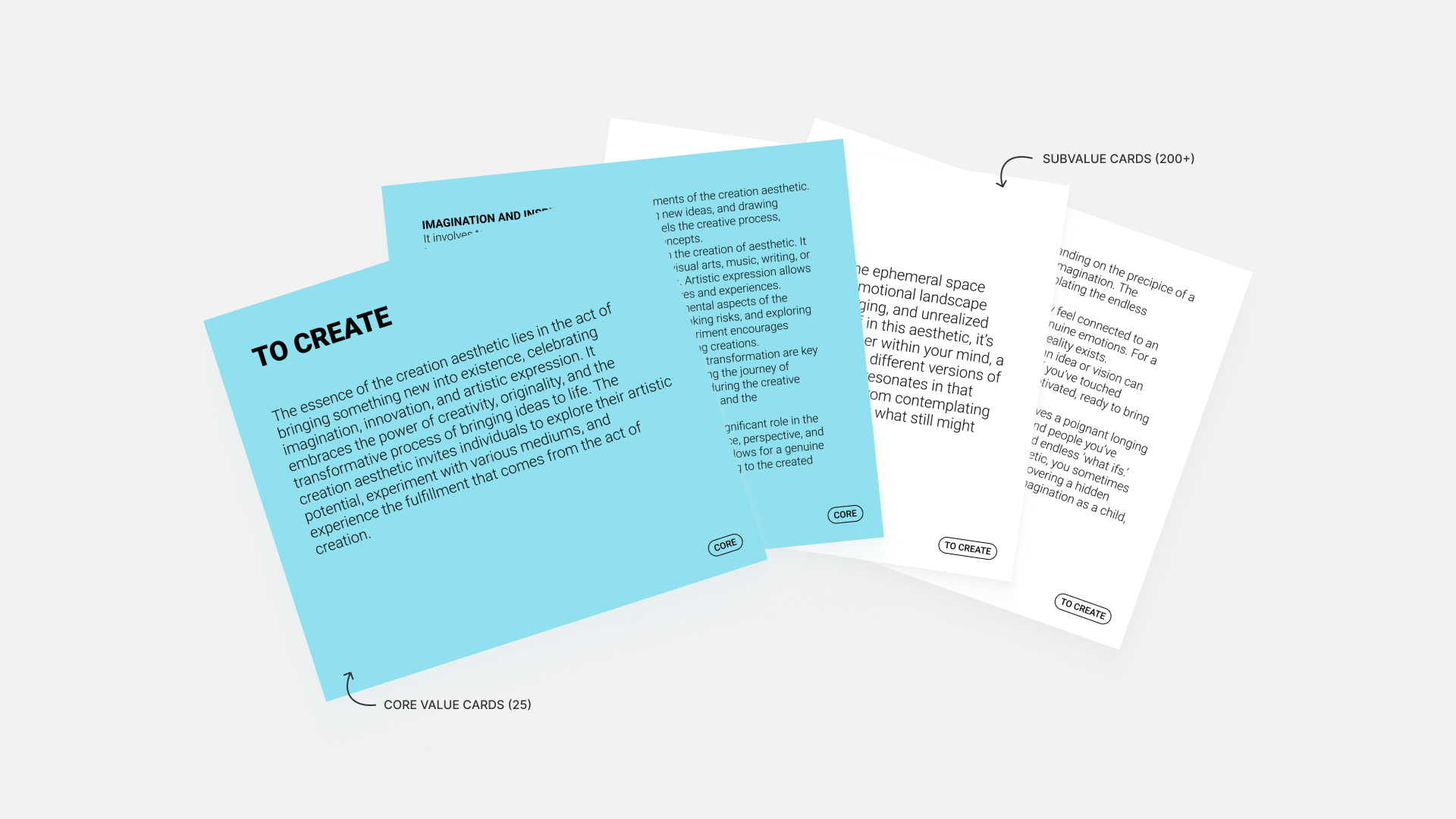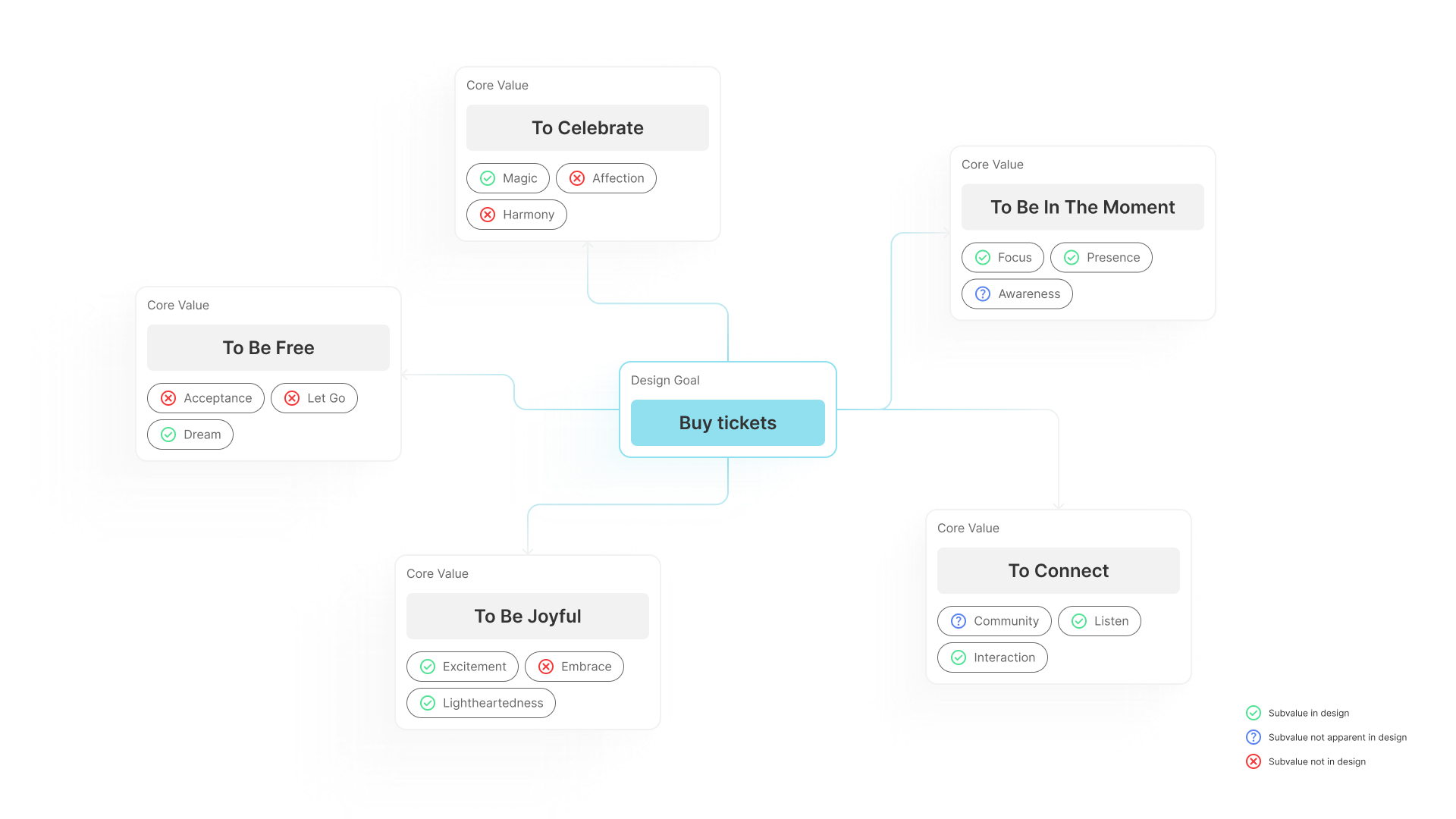
Background
Experience Aesthetics is a design framework developed based on Yuriko Saito's book "The Aesthetics of the Familiar." It primarily focuses on understanding human interactions and experiences with other people, objects, and environments.
However, as a new and still-developing concept, the impact of this framework needs to be validated in order to be launched. Other problems such as the sheer volume of content also poses as a challenge to designers as there are more than 200+ cards to read though.

Approach
The main challenge is working with a completely new and still-developing framework, which poses many uncertainties ranging from effectiveness to value. To address this, I conducted a series of interviews with different skill range of designers, gathering feedback on their experience using the framework and its impact.
I implemented a multistep process to identify the core values and subvalues that contributed to each project, asking participants to rank the success of their outcomes. Additionally, a self-reflection step was incorporated to assess whether this framework truly helps designers improve their design through human experiences and values.

Impact
Although still a work in progress, the Experience Aesthetics framework has improved people's "understanding of design" and rationale behind certain choices. Previously, participants were unsure how to verbalize their reasoning, but by focusing on the human experience, design choices became a lot easier to make per project.
Understanding
+85%
Improvement